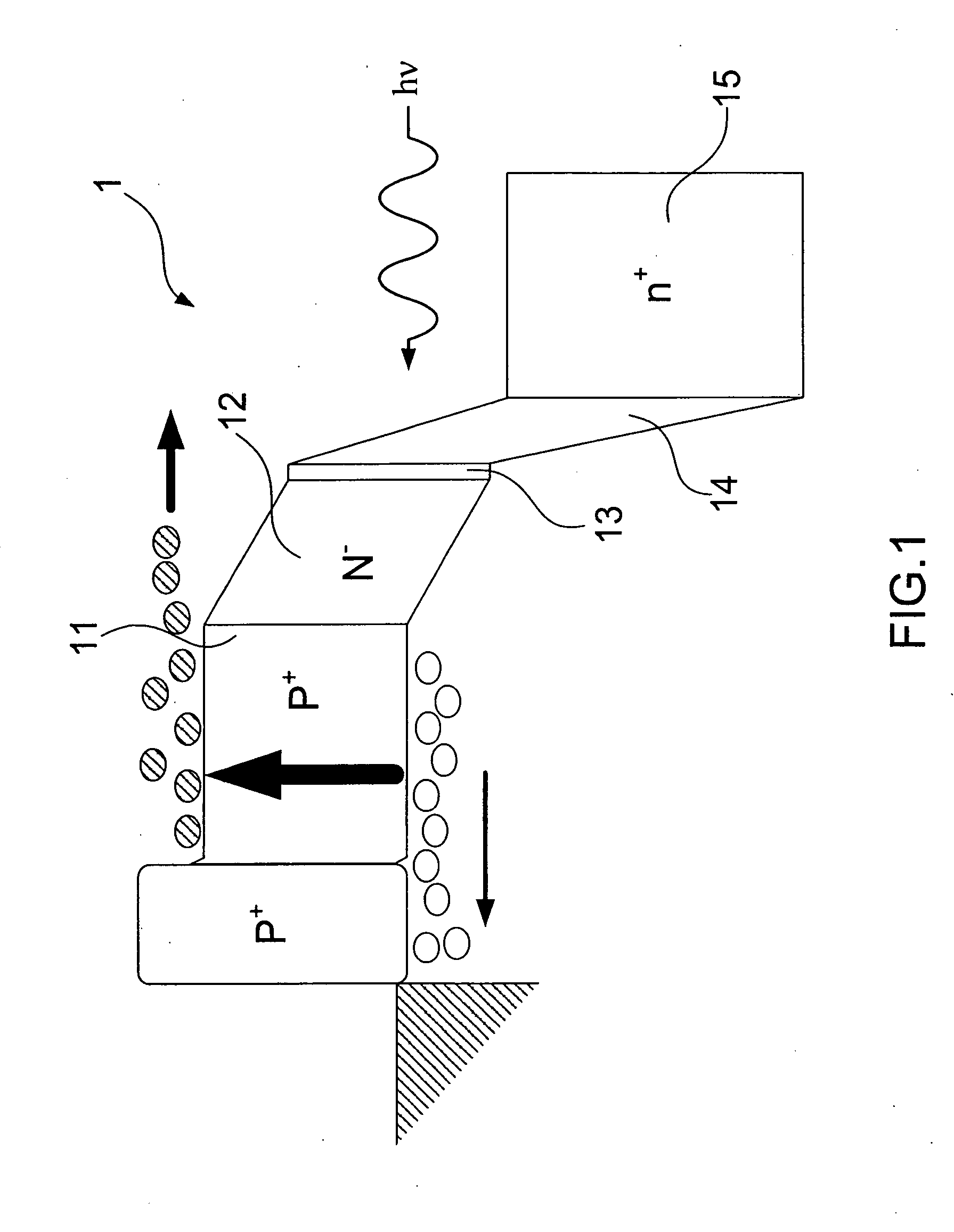Structure improvement of depletion region in p-i-n photodiode
a photodiode and depletion region technology, applied in the direction of basic electric elements, electrical equipment, semiconductor devices, etc., can solve the problems of slowing down the transmission speed of electrons, affecting the efficiency of photodetectors, so as to improve the output power and bandwidth of photodetectors, and prevent the drifting velocity of electrons
- Summary
- Abstract
- Description
- Claims
- Application Information
AI Technical Summary
Benefits of technology
Problems solved by technology
Method used
Image
Examples
Embodiment Construction
[0023] The following descriptions of the preferred embodiments are provided to understand the features and the structures of the present invention.
[0024] Please refer to FIG. 1, which is a structural view according to the present invention. As shown in the figure, the present invention is a structure improvement of depletion region in a p-i-n photodiode, where its epitaxy layer 1 comprises a first p-type doped layer 11, a first n-type doped layer 12, a second p-type doped layer 13, an undoped layer 14, and a second n-type doped layer 15, to form a p-n-p-i-n epitaxy layer grown on any doped diode or semi-insulated diode made of GaAs, InP, GaN, AlN, Si or GaSb. The first p-type doped layer 11 is made of a light-absorbing material to be a light-absorbing layer; and, is graded doped to accelerate electron discharge. The first n-type doped layer 12 is made of a material of ballistic transmission to accelerate the transmission of carrier; and, is graded doped to increase a breakdown volt...
PUM
 Login to View More
Login to View More Abstract
Description
Claims
Application Information
 Login to View More
Login to View More - R&D
- Intellectual Property
- Life Sciences
- Materials
- Tech Scout
- Unparalleled Data Quality
- Higher Quality Content
- 60% Fewer Hallucinations
Browse by: Latest US Patents, China's latest patents, Technical Efficacy Thesaurus, Application Domain, Technology Topic, Popular Technical Reports.
© 2025 PatSnap. All rights reserved.Legal|Privacy policy|Modern Slavery Act Transparency Statement|Sitemap|About US| Contact US: help@patsnap.com



